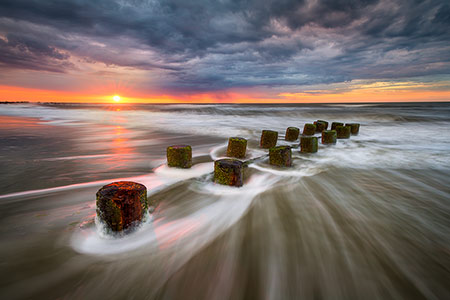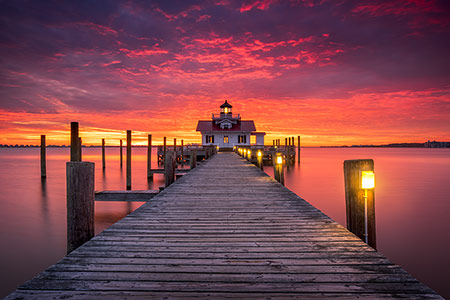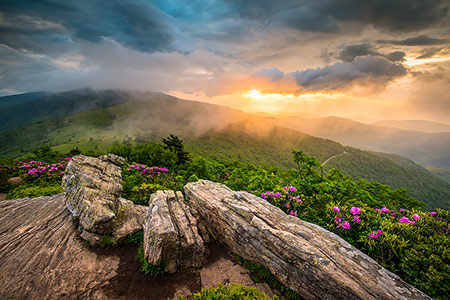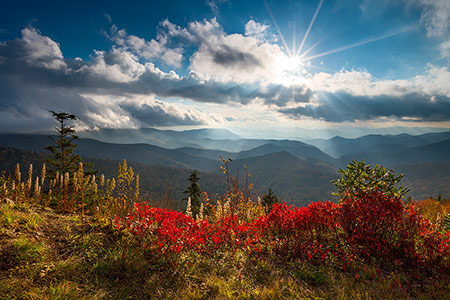I guess it makes sense to give some examples of real world exposure settings. While no list could ever cover every photographic possibility, some standard examples could be helpful to someone learning the process of exposure. Just keep in mind that these are only very basic guidelines, or examples of settings many photographers commonly use. The ideal settings for any given picture could vary widely depending on the subject, how you want it to appear, the available light, and other variables.
ISO settings won't be mentioned here since raising the ISO settings damages image quality. The ISO should be kept at the lowest setting possible in any case.
Typical Mode: Aperture Priority
Typical Aperture: f2.8 to f8
With portrait photography, there are a few things that are important to getting great portrait shots. You'll want to keep your shutter speeds fast enough so that movement doesn't blur your image, resulting in sharp photographs. Many photographers also prefer a shallow depth of field because it can soften a busy background making your subject really stand out. Since a large aperture setting keeps the shutter speeds fast, these settings go hand in hand producing portraits that are sharp and have more impact. Most photographers will use the "Aperture Priority" mode on their camera for these shots, so that they can set the DoF to their liking and let the camera decide the actual shutter speed to give the proper exposure.
Typical Mode: Aperture Priority
Typical Aperture Setting: f8 to f22
Landscape shots are difficult to give typical settings for, because there are so many different variables. Most landscape shots feature a deep depth of field to keep everything near and far in focus, and that requires a smaller aperture setting. This small aperture setting generally makes shutter speeds fairly slow which is why landscape photographers almost always use tripods. Occasionally you'll see a landscape image like the lone tree on the hill shot with "portrait" type exposure settings, but if everything in your shot needs to be in focus, or you have elements both near and far, then you will want to stay with the smaller aperture settings between f8 and f22. The exact settings of course will depend on the amount of available light, just how deep the DoF needs to be, and other factors that go beyond these basic generalizations.
Typical Mode: Shutter Priority
Typical Shutter Speeds: 1/400th sec. to 1/4000th sec.
When trying to stop fast action you'll want to keep shutter speeds fast. Just how fast depends on what you are trying to capture, and the degree of motion blur you feel is acceptable. Most photographers will use shutter priority mode for these types of shots so that they can tailor the shutter speed to the action that they are shooting, and let the camera adjust aperture to compensate. For example when shooting race cars, you may want to find the shutter speed that does a good job of keeping the car sharp while allowing the wheels and tires to be slightly blurred to show motion and give a sense of speed. You may find a shutter speed of around 1/400th of a second will do great for this, while you may need something closer to 1/2000th of a second to catch the wings of a flying hummingbird or falling water drops. Achieving fast shutter speeds can be difficult if there is not enough light available, and it is in these cases where setting the ISO higher may be your only choice.
Typical Mode: Shutter Priority
Typical Shutter Speeds: 1/200th to 30 sec.
Motion blur is another tough one to give typical settings for, as the speed of the subject and the amount of blur you want greatly affect the settings needed to achieve the shot you want. The typical mode used in these situations is "Shutter Priority" so that you can control the exact amount of motion blur you are looking for, same as with trying to stop fast motion only this time we are trying to slow down the shutter speed to show the motion. If you want the clouds in your landscape to smear and show movement, it may take a shutter speed of 30 seconds or more even. A typical use of deliberate motion blur is those silky waterfall shots, which are typically shot using a shutter speed between 1/3rd sec. to 2 sec. depending. The shutter speeds are generally slower when allowing for motion blur, but the actual speed needed is completely dependent on the speed of the subject. For example, if you are looking for a sense of movement in the tires of a Formula 1 race car, 1/400th of a second might be slow enough to achieve the effect. Just set your camera to shutter priority mode and experiment a little and you'll find the right speed for your shot quickly.
As I said at the beginning, no list of settings could actually cover the variables you will encounter when taking your photos, but these general guidelines should help to give you an idea of what settings are used to create the various effects you'll see being used in photography. With a little practice and experience, you'll learn your own photographic style and what works best for you. Photography is an art, and wrong or right is really up to you and what you are trying to achieve!
I hope these tips will help you to improve your own photography. Use the links to navigate forward, backward, or go to the "Main Menu".



